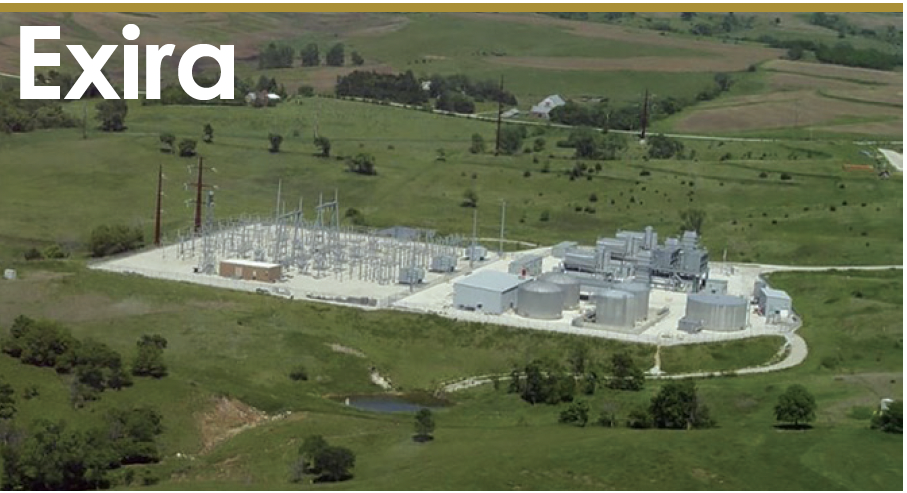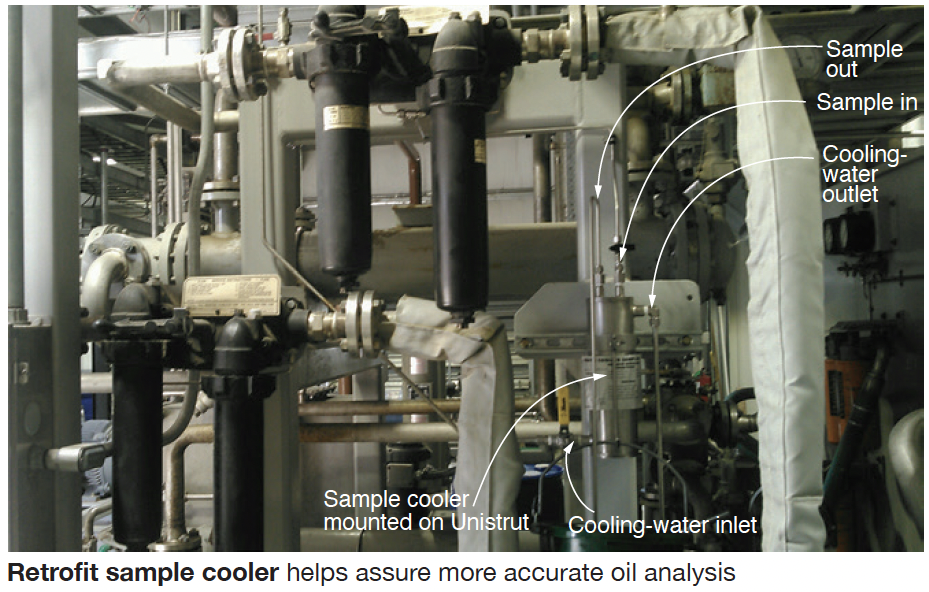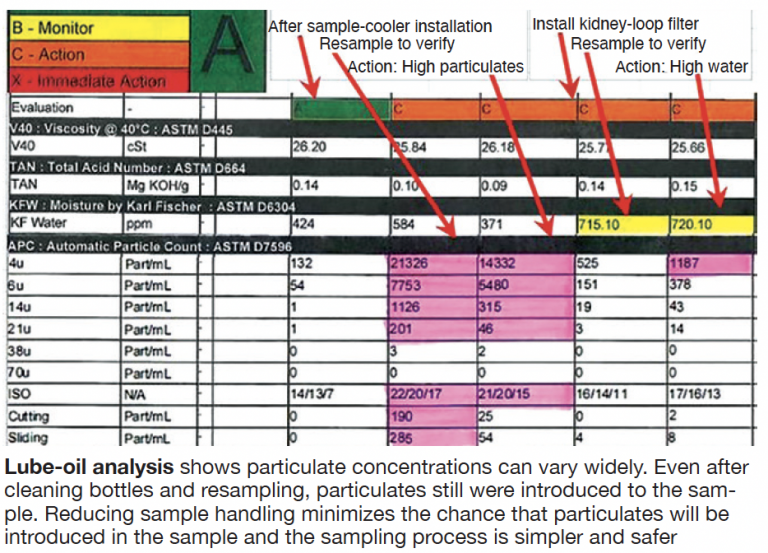
Exira Station
Owned by Western Minnesota Municipal Power Agency Operated by Missouri River Energy Services
140-MW, dual-fuel, three-unit, peaking facility located in Brayton, Iowa
Plant manager: Ed Jackson
Turbine-oil sampling improvements
Challenge. The best place to get a representative sample for oil analysis is from the engine bearings before fluid filtration, which removes particles that you need to know are in the oil. The path of oil from the bearings of an LM6000 is through the scavenge pump, scavenge filter, cooler, and back to the oil tank. If you grab the sample from the cooler discharge, or the tank, then it is downstream of the scavenge filter and the oil you sample will be filtered.
Unfiltered scavenge oil from the bearings before the cooler is above 200F. Sampling this oil is not only dangerous because of possible burns, but it softens the plastic sample containers. One way around this is to collect the sample in a glass container and allow it to cool before transfer to the sample lab’s plastic containers. However, the more times the sample is handled, the greater the opportunity to introduce contaminants, while not lessening the chance of burns from hot oil.
Solution. Install a sample cooler. This eliminates the chance for burns, making sample collection safer, and reducing the chance of introducing contaminants into the sample; plus, it allows you to grab an unfiltered sample. A small stream of cooling water can be directed from any water source, even city water, to flow though the sample cooler while taking the sample.
Water discharged can be directed to a drain, or sewer, or recirculated back to the cooling system. For about the same amount of water as it would take to flush a toilet, you can cool the sample oil temperature from more than 200F to cool-to-the-touch.

Plant personnel obtained a stainless-steel sample cooler for less than $500 and clamped it to a piece of Unistrut they added to existing tube steel on the auxiliary skid (photo). For the oil lines to/from the cooler they used ¼-in. tubing and for the water lines to/from the cooler, 3/8-in. tubing. There is an existing connection on the inlet to the scavenge cooler that is piped to the high side of the differential-pressure gage. A Swagelok ¼-in. tee was installed in this line to supply the cooler with the oil to be sampled in an afternoon.
Results. Plant personnel now obtain oil samples directly from the turbine scavenge prior to filtering, reducing the potential for an inaccurate sample caused by entry of contaminants (table). Plus, there’s a safety benefit: Reduced potential for burns from hot oil.
Project participants: Chad Case, Brendon Clancy, and Allen Scarf




